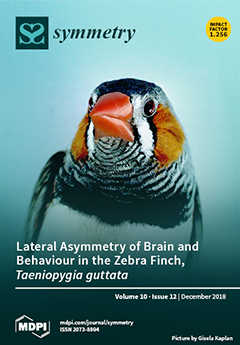1
Department of Chemistry, College of Science, King Khalid University, P. O. Box 9004, Abha 61413, Kingdom of Saudi Arabia
2
Sudan Atomic Energy Commission, P. O. Box 3001, Khartoum 11111, Sudan
3
Administration of Customs Laboratories and Environment, Radiation Protection and Nuclear Department, Sudan Customs Authority, Khartoum 11111, Sudan
4
Higher Institute of Biotechnology of Sfax (ISBS), Sfax University, P. O. Box 263, Sfax 3000, Tunisia
5
Faculty of Sciences and Arts in Balgarn, University of Bisha, P. O. Box 60, Balgarn-Sabt Al Olaya 61985, Kingdom of Saudi Arabia
6
LR11-ES31 Laboratory of Biotechnology and Valorisation of Bio-Geo Resources, Higher Institute of Biotechnology of Sidi Thabet, BiotechPole of Sidi Thabet, University of Manouba, Biotechpole Sidi Thabet, 2020 Ariana, Tunisia
7
Department of Chemistry, Faculty of Science, King Faisal University, P. O. Box 400, Al-Ahsa 31982, Saudi Arabia
8
Physics Department, Taibah University, P. O. Box 344, AL Madinah Almunawarrah 41412, Saudi Arabia
Abstract
Various commercially imported ceramic materials used in the building of Sudanese dwellings were examined in order to determine their natural radioactivity and radiological hazard parameters. In this context, twenty-five different consignments were sampled and analyzed using (3″ × 3″) sodium iodide gamma spectrometry
[...] Read more.
Various commercially imported ceramic materials used in the building of Sudanese dwellings were examined in order to determine their natural radioactivity and radiological hazard parameters. In this context, twenty-five different consignments were sampled and analyzed using (3″ × 3″) sodium iodide gamma spectrometry system NaI(Tl). The identified average activity concentrations of
238U,
232Th, and
40K were 183 ± 70, 51 ± 44, and 238 ± 77 Bq/kg dry-weights, respectively. A positive correlation between
238U and
232Th in the investigated samples was identified from the observed significant correlation (R
2 = 0.8). Interestingly, a low Th/U ratio (~0.3) was recorded, which could be related to the systematic loss of thorium during the fabrication process. The measured activity concentrations for these radionuclides were comparable with the reported data obtained from similar materials used in other countries showing similarity in ceramic materials used in buildings. Five different radiation indices, such as the average radium equivalent (Ra
eq), the absorbed dose rate (D), the annual effective dose equivalent (AEDE), the external hazard index (H
ex), and the radioactivity level index (l
γ), which indicate hazardous radiation, were estimated from these measurements. The obtained results revealed average values of 274 ± 106 Bq/kg, 125 ± 48 nGy/h, 1.23 ± 0.48 mSv/y, 0.74 ± 0.29, and 0.94 ± 0.37, for Ra
eq, D, AEDE, H
ex, and l
γ, respectively. The mean values of Ra
eq and H
ex were in good agreement with the international limits, while the means of D and lγ were higher than the universal values. Calculated AEDE in about 60% of the samples exceeded the universal limit of 1 mSv/y for the public exposure (maximum value of 2.16 mSv/y). The investigated parameters were in the same range for the majority of imported samples; however, they were slightly higher than the locally produced ceramic, highlighting the importance of monitoring imported materials for their radioactivity contents.
Full article





